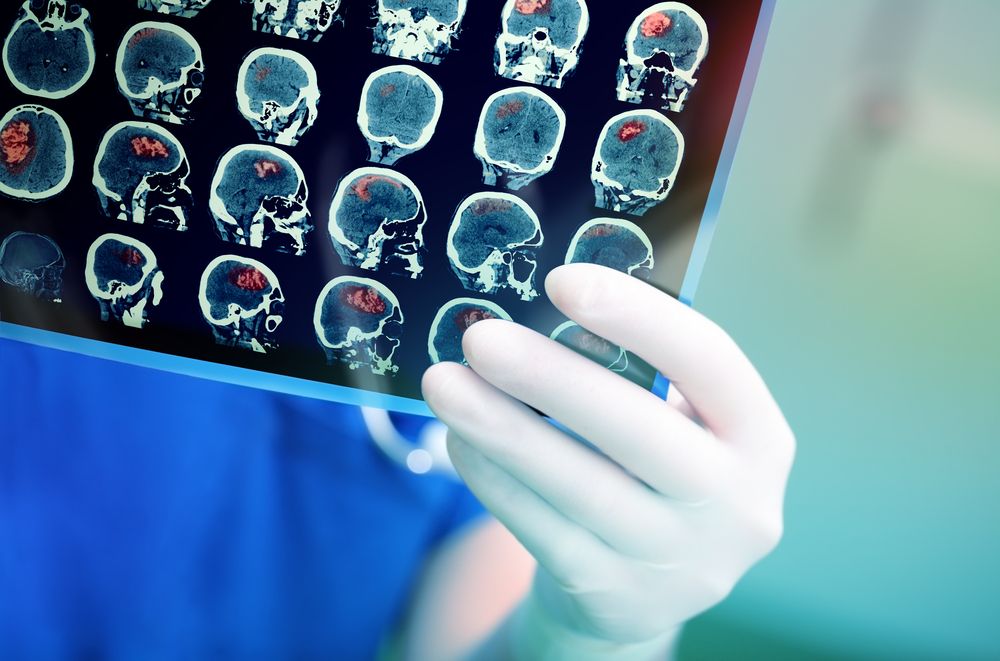MRI Room Service: Portable Machine Brings In-Room Scans to Stroke Patients
Bedside MRI could offer stroke patients a safer alternative to conventional MRI.

Hyperfine Portable Point-of-Care MRI Device, 510(k) pending

Patients suffering from ischemic or hemorrhagic stroke could soon undergo brain MRIs at their bedside instead of braving crowded hallways and tight elevators, traveling to an MRI scanner located in a different hospital wing.
Currently, in order to obtain clinical-quality images, hospital staff must transport these critically ill patients to a room that houses a large, high-field MRI scanner. Not only is it a safety risk to move a stroke patient, but these exams are expensive.
In a presentation of new research next week during the International Stroke Conference, Kevin Sheth, M.D., chief physician in the Yale School of Medicine and Yale New Haven Hospital division of neurocritical care and emergency neurology, will discuss the early results of the clinical performance of portable, low-field MRI.
“MRI is one of the most helpful and safest diagnostic technologies, but because of the high field and everything emanating from that high field, you have to take that safe technology and put it in the bunker of the hospital away from the patient where it’s difficult to access,” he told Diagnostic Imaging in an interview. “Low field is important because, if you can obtain images of the brain that are clinically useful, you can switch from high field, and all the safety concerns go away. Instead of taking the patient to the MRI, you can bring the MRI to the patient.”
In an effort to test the technology’s efficacy, Sheth’s team conducted bedside MRI with 85 stroke patients within seven days of symptom onset, using the 510(k)-pending portable machine developed by the manufacturer Hyperfine. The patients ranged in age from 18 to 96, and 46 percent were women. Of the participants, 46 percent experienced ischemic stroke, 34 percent had intracerebral hemorrhage, and 20 percent suffered subarachnoid hemorrhage. Exams lasted, on average, 30 minutes, and only 11 patients couldn’t complete the exam – five because they couldn’t fit inside the machine’s 30-centimeter opening, and six due to claustrophobia.
Potential Benefits and Challenges
Alongside the convenience of wheeling an MRI machine into a patient’s room, there are several other possible benefits to using the low-field machine, Sheth said.
For example, the portable MRI, which is roughly half the size of a portable CT scanner, uses a 64mT magnet, compared to a 1.5T or 3T magnet used in conventional MRIs. Such a substantial difference removes many of the safety issues associated with the modality.
“It’s really a fraction of the strength. I’ve scanned myself, and we’ve had a lot of volunteers. You can take in your wallet, your keys, and your glasses,” Sheth said. “But, we’ve also had a lot of brain-injured individuals in the ICU setting – those who have been intubated or not intubated. Others have been on ventilators or had oxygen tanks in the room. It’s been safe in every case.”
Additionally, images can be gathered without a highly trained technician at the helm, and the size limits the cooling and electricity requirements. The price tag could also be reduced. Currently, a conventional 3T MRI can cost up to $3 million, but a low-field system could be a more affordable $50,000-$100,000 expenditure for a hospital or health system, he said.
Most importantly, however, Sheth said, portable, bedside MRI could improve access to an imaging technology that significantly impact patient care.
“The research already shows the portable machine can be wheeled into patient rooms in the ICU, but what’s to say it can’t be used throughout the hospital or outpatient clinic or Third World country,” he said. “It could completely democratize MR imaging.”
But, the advancement isn’t without possible challenges, he added. More work needs to be done to continually improve the image quality. The biggest, hurdle, however, will be housing and processing the volume of data the machine will likely be able to collect.
Use and Impact
Portable MRI images are not as high quality as those from a conventional MRI, and it is not intended to replace the high-field technology, Sheth said. But, even these early images are comparable to those captured by CT.
“In this setting, the images from the low-field MRI are already better than CT in terms of being able to determine gross pathology, such as stroke or hemorrhage, and seeing ventricles and other brain anatomy,” he said. “And, hardware, software, and image reconstruction improvements are still coming.”
Today, he said, portable MRI can best be used to answer acute clinical questions, such as the presence of a brain hemorrhage.
Ultimately, Sheth said, portable MRI could have wide-ranging impact. While current research has focused on stroke, more research is underway into its utility with head injuries and other neurological traumas. Potential applications could also exist in musculoskeletal imaging.
New MRI Research Explores Links Between Waist-to-Hip Ratio and Memory in Aging
March 13th 2025Researchers found that a higher waist-to-hip ratio in midlife was associated with higher mean diffusivity in 26 percent of total white matter tracts in the cingulum as well as the superior and inferior longitudinal fasciculus.